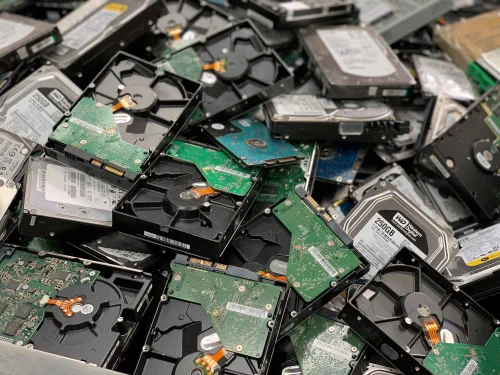Electronic scrap, commonly known as e-waste, refers to discarded electronic devices or components. E-waste is a growing environmental concern due to the increasing use of electronic devices and their rapid obsolescence. These electronic devices can contain hazardous materials, such as lead, mercury, cadmium, and various other toxic substances, which pose risks to both human health and the environment if not properly managed.
Here are some key points about electronic scrap (e-waste):
- Types of E-waste:
- Consumer Electronics: This includes items like smartphones, tablets, laptops, cameras, and audio/video equipment.
- Home Appliances: Refrigerators, washing machines, microwaves, and other household appliances contribute to e-waste.
- IT Equipment: Computers, servers, printers, and other information technology devices.
- Entertainment Devices: Televisions, gaming consoles, and other entertainment electronics.
- Environmental Impact:
- Toxic Substances: E-waste often contains hazardous materials that can contaminate soil, water, and air if not handled properly.
- Resource Depletion: Electronic devices contain valuable resources like metals and rare earth elements. Recycling e-waste helps in recovering these resources and reduces the need for mining.
- Global Issue:
- E-waste is a global problem, and improper disposal practices in one part of the world can affect ecosystems and communities elsewhere.
- Developing countries often bear the brunt of e-waste, as some electronic devices are shipped to these regions for processing, leading to environmental and health concerns.
- Recycling and Proper Disposal:
- Recycling e-waste is crucial for mitigating its environmental impact and recovering valuable materials.
- Many countries and regions have established regulations and recycling programs to manage e-waste properly.
- Proper disposal methods involve dismantling and recycling components, ensuring the safe disposal of hazardous materials.
- Electronic Waste Management:
- Companies and governments are increasingly recognizing the importance of responsible e-waste management.
- Initiatives include establishing collection centers, promoting extended producer responsibility (EPR), and encouraging consumer awareness about recycling options.
- Circular Economy:
- The concept of a circular economy involves designing products with recycling and sustainability in mind, reducing waste and promoting the reuse of materials.
- Consumer Awareness:
- Educating consumers about the impact of improper e-waste disposal and encouraging responsible recycling practices is essential.
Addressing the e-waste problem requires collaboration between governments, industries, and consumers to create effective policies, regulations, and practices for the sustainable management of electronic waste.

